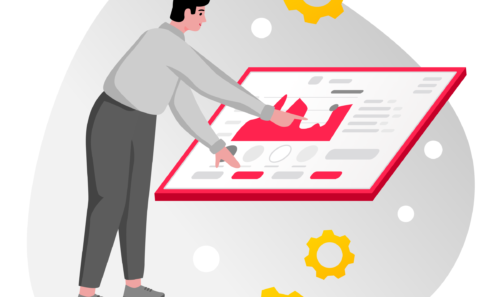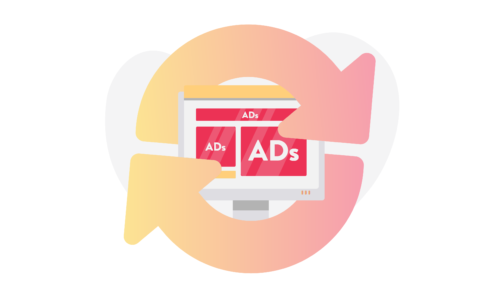Programmatic 2020 Trends: Five Things to Take Away from the YieldFest London Publishers Meetup
Only in 2020 will we feel the full strength of the changes in the digital advertising that are now taking place. Once ad budgets for 2019 are spent, advertisers will have more flexibility in implementing new strategies that will impact publishers. The total value of the advertising market will not decrease but the resource allocation itself will change. In order not to be outdone, we must constantly test – and cooperate more closely.
In the ocean of system changes, no publisher is an island. From the recent switch in Google AdManager auction model, through restrictions on the use of third party cookies for targeting, to subsequent effects of GDPR – we can try to deal with all this on our own, based on our own research, making decisions within our own proven team – relying on our own success. If this is what your plan looks like, then you are not the only publisher choosing this path. However, what if your own strategy will bring negative effects? Then, this will be your own burden.
That is why more and more publishers assume that even when operating on the same market and competing for the same resources, it is worth being in constant contact with each other.
The Yieldfest meetup, held for the first time in London, gathered the representatives of over 30 publishers from the UK and Europe who talked with us about their biggest challenges and priorities for 2020.
What we learned:
Let’s not underestimate GDPR

GDPR quickly became the buzzword of the meetup – somewhat understandingly considering that in its June report the UK’s data protection authority, the Information Commissioner’s Office, raised objections to current practices of using personal data by, among others, digital publishers (including the legitimate-interest clause).
Will the ICO remain isolated in this appeal from a global perspective? That is very doubtful. So what actions are worth taking in advance?
Reconsider your current online advertising practices and engage with other business units (eg. marketing & sales) to have a clear picture of what activities are being elaborated and what use of personal data collection this involves. Together review the privacy and cookie notices and where necessary, enhance the sections on marketing and digital advertising to give your users a much clearer picture of what is happening to their data.
Also, stay up to date with further ICO actions, as the DPA will release a second industry review in December.
“It’s complicated” is no longer an excuse. People expect players across the advertising industry to use their information in a way that is respectful, lawful, transparent and secure. The GDPR applies to all sectors and adtech is no exception.
Simon McDougall – Executive Director // ICO
Let’s understand and apply pricing strategies
The switching of the Google Ad Manager to the first-price auction model gave publishers some new toys to play with. We can now analyze the bid landscape insights from all the buyers, we are moving away from the routine of changing floor prices in the second price auction model, the auction process itself is so much easier to explain and understand now.
However, at the same time, many publishers are threatened by the potential outflow of advertising budgets. Are their feelings justified?

If we make the shift in the auction model, the same amount of money will still be going in. Despite whether it will be transacted with the first or second price, in theory, we will end up with roughly the same amount coming out of it. Now think again about how big the industry is, it’s just not going to disappear within a night but there are probably going to be some significant changes that we will all go through, mainly around targeting.
Jon Hatfield – Head of Advertising Product & Technology // Shpock App

We wrapped up a handful of golden rules, that every Google Ad Manager user should know and implement:
- Don’t leave your inventory unprotected (without any floors)
- Use a broad-to-narrow targeting approach
- Make sure 100% of your inventory is covered by UPR’s
- Set the same rates as on UPRs as your header SSP’s
- Know your inventory value on the market level for specific advertisers
- Manage floor prices by observing advertisers and their historical behavior
Let’s learn to recognize our users
Although the work of digital publishers is already like jumping over hurdles, here come the limitations of third-party data usage.
The ability to recognize the user and the frequency cap effectively, that’s probably the biggest challenge and opportunity. Until we find a way to get to that point, it’s always going to be a real disadvantage, regardless of the scale.
Jon Hatfield – Head of Advertising Product & Technology // Shpock App
That statement was accepted with unanimous consent, so it looks as we all should turn our eyes towards the solutions such as Unified ID – an ID stored in a first-party cookie, accessible in a third-party context.
Learn more about the Unified ID solution in depth.
Let’s figure out the true value of our inventories
Understanding the value of an inventory becomes the most important research field in the first-price auction and GDPR reality. CPM, CTR & viewability can be the key metrics that reflect the value for both the buying and selling sides.

Especially now, when everything is changing rapidly and we are experimenting with different ideas on the website, the biggest challenge is to be able to see the results of what we do accurately. Testing and being able to actually analyze the results effectively is most important.
Matt Mucha – Founder // Omni Calculator

Improving indicators is one of the widest topics, which is why we will only signal a few potential actions at this point.
Do you want a deep dive and discuss them in examples? Lukasz Sidor, Head of Product Development at Yieldbird is always around to help:
- Improve your viewability, as working towards increasing it, you will get better CTRs (overall correlation between the metrics is ~0.45 – it’s positive and pretty strong)!
- Work on removing unintended clicks by adjusting the ad grid.
- Limit access to your inventory for brands/advertisers that have historically ’low-CTR-ads’.

Let’s see each other and talk more often!
The last conclusion sounds quite obvious but don’t be fooled. The programmatic ecosystem contains various categories of entities, among which, publishers seem to talk to each other… relatively rarely. During YieldFest it has been said many times that our community needs to talk to each other more openly and often. For what purpose? This is best expressed by the words of our panelists.
We are a legacy news publisher, so there is a lot to take in during a very short space of time. We do need to use technology in our favor, yet how we do it, is very much up to us. Now what we have been doing is a sort of internal education. It sounds simple, but it’s so important in our environment to be sure that we internally have a common understanding of what we are doing.
Nênci Obregon – Advertising Operations & Programmatic Manager // Irish Independent

Meeting with other publishers, there is always going to be this competitiveness: everybody is going to say “we’re better than you, our stack is better than yours” but we need to collaborate, we need to start talking.
Everybody else talks, we are disadvantaged if we do not collaborate. What is going on in the programmatic industry now is an opportunity if we move fast enough but it’s a challenge if we don’t.
Terry Hornsby – Digital Solutions Director // Reach PLC







